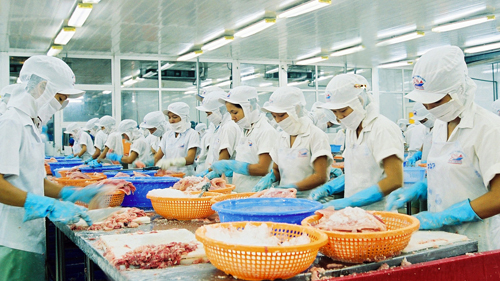Manufacturing sector moves closer to stabilization: HSBC
Vietnam’s manufacturing sector showed signs of near stabilization even though its output and new orders continued to fall in August, according to HSBC.
The August survey says, there was a survey record increase in employment as manufacturers were in the positive for activity.
Profitability remained under pressure, however, as output charges were little changed, but input prices rose at the sharpest pace since March. Rising transportation costs were widely reported.
The headline seasonally adjusted Purchasing Managers’ Index™ (PMI™) recorded 49.4 in August. That was an improvement on July’s 48.5 and the best reading since April but, by remaining below the 50.0 no-change mark, signaled a marginal deterioration of manufacturing operating conditions.
New orders received by Vietnam’s manufacturers continued to fall in August, extending the current run of contraction to four months. Market activity remained slow, according to panellists, and customer demand soft. That said, there were reportedly pockets of growth, the net result being only a marginal overall contraction in new work.
 |
Latest data showed that new export orders also continued to decline. The marginal fall was the third in successive months. Export market conditions were reported to have remained tough, but were showing signs of stabilisation.
Manufacturing production volumes fell for a fourth month in succession during August. The decline was linked to a fall in new orders. In line with the trend for sales, the degree to which output fell was modest.
Manufacturers were again able to make inroads into their work outstanding during the latest survey period. Backlogs of unfinished orders fell for the seventeenth successive month, and again at a marked pace.
Falling backlogs in part reflected a depletion of inventories. Warehouse stocks fell marginally for the first time in three months. Additional capacity also helped companies to keep on top of workloads. Employment rose in August for the first time since April, with the rate of growth solid and the sharpest in the survey history. Recruitment reflected positive forecasts for production and orders.
Profits came under further pressure, reflective of two factors.
Firstly, output charges were little changed. Competitive pressures, efforts to stimulate sales and client requests for reduced prices all weighed on average tariffs.
Secondly, input prices rose at a marked and accelerated pace. Inflation was the sharpest since March. Higher transportation costs and a rise in the price of oil and associated derivatives were reported as key inflation drivers.
Commenting on the Vietnam Manufacturing PMI™ survey, Trinh Nguyen, Asia Economist at HSBC said that “Vietnam manufacturing activity continues to be hammered by weak external demand and sluggish domestic conditions, although the pace of contraction is significantly reduced. Global demand is expected to pick up towards year-end thanks to a recovery from the US, the Eurozone, Japan, and China. This should help the manufacturing sector. However, with input prices rising and domestic conditions still weak, we think the recovery process in Vietnam continues to be bumpy.”
